Fish paste is a versatile ingredient that can be used in a variety of ways, from stuffing peppers to making fish balls and tofu. But what exactly is fish paste, and how can you make it at home? In this article, we'll explore the world of Chinese fish paste recipes and provide you with everything you need to know to make this delicious ingredient at home.
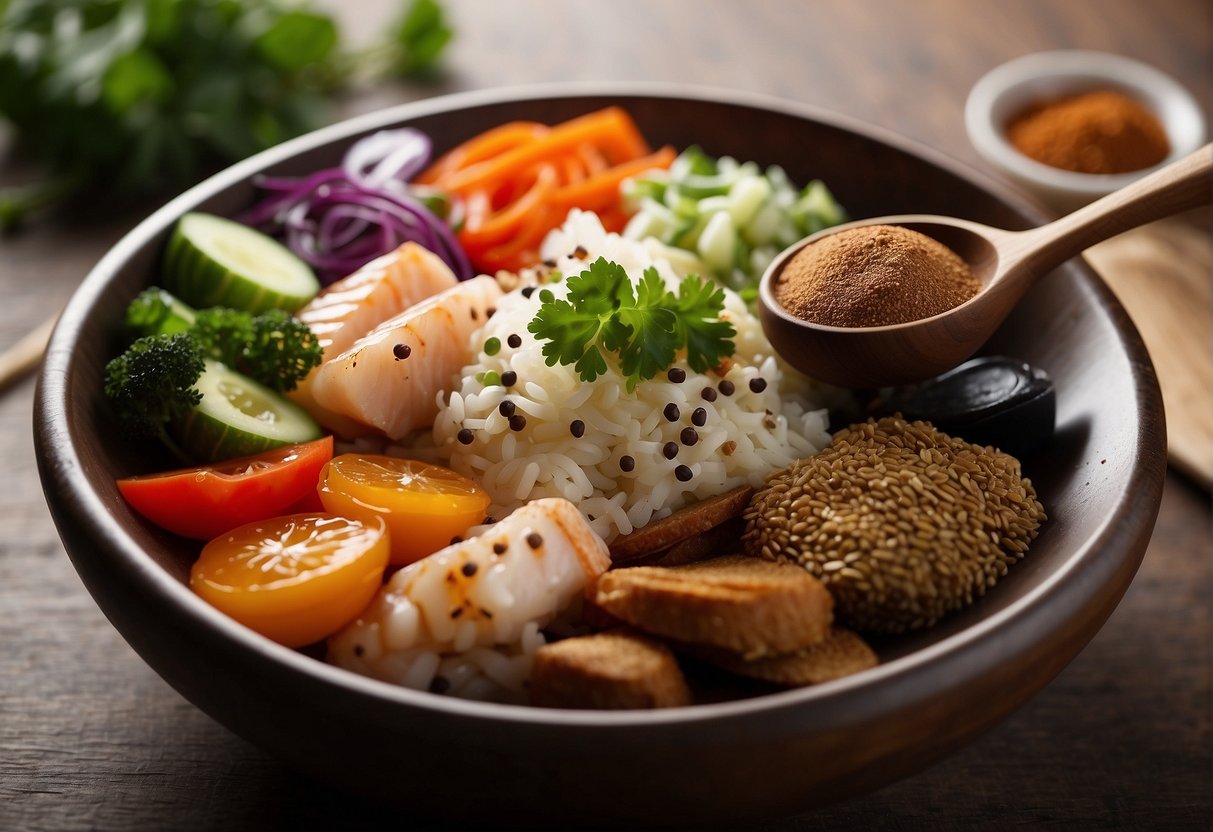
Fish paste is a common ingredient in Chinese cooking, made by blending fresh fish meat with seasonings and other ingredients. The resulting paste can be used in a variety of ways, such as stuffing vegetables, making fish balls, or as a filling for dumplings. The type of fish used can vary, but it's typically a white fish such as cod or pollock.
To make fish paste at home, you'll need fresh fish, which you can grind in a food processor or meat grinder. You'll also need a few other ingredients, such as egg white, salt, and starch, to bind the paste together. Once you have your base ingredients, you can start experimenting with different seasonings and flavourings to create your own unique fish paste recipe.
Key Takeaways
- Fish paste is a versatile ingredient used in a variety of Chinese dishes.
- It's made by blending fresh fish meat with seasonings and other ingredients.
- To make fish paste at home, you'll need fresh fish, egg white, salt, and starch as the base ingredients.
Understanding Fish Paste
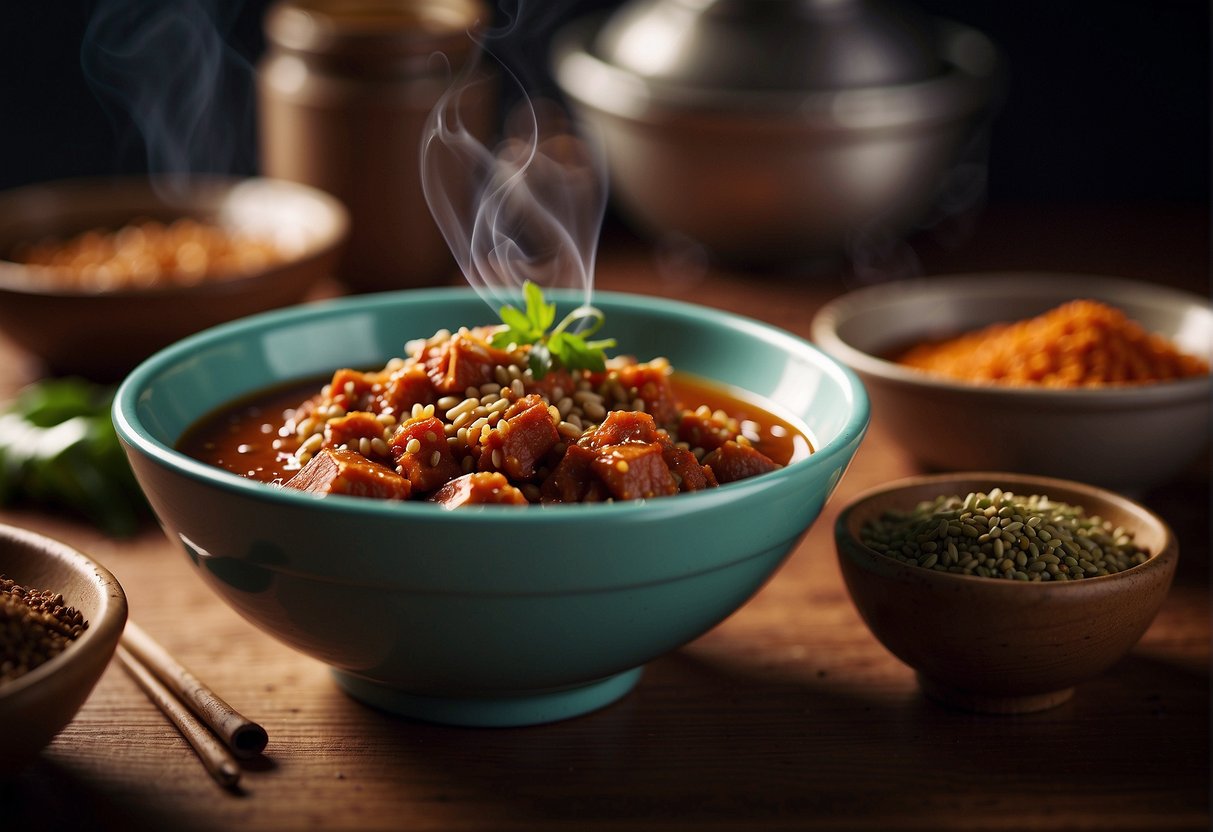
History and Tradition
Fish paste has been a staple in Chinese cuisine for centuries. It is traditionally made by mashing up white fish, eel or shrimp with bones and seasoning, and then fermenting it for several months. The fermentation process helps to break down the proteins in the fish, creating a smooth, creamy paste with a distinctive umami flavour.
Fish paste is used in many classic Chinese dishes, including fish balls, fish cakes, and stuffed peppers. It is also a popular ingredient in dim sum, where it is often combined with other ingredients such as tofu or vegetables.
Selecting the Right Fish
When making fish paste, it is important to select the right type of fish. White fish such as cod, haddock or pollock are ideal, as they have a mild flavour and firm texture. Eel and shrimp can also be used, but they have a stronger flavour which may overpower the other ingredients.
When selecting fish, it is important to choose fresh, high-quality fish. Look for fish that is firm to the touch, with clear eyes and red gills. If possible, choose fish that has been sustainably sourced.
If you want to experiment with different flavours, you can also try using other types of seafood such as crab or prawns. Just make sure to adjust the seasoning accordingly to complement the flavours of the seafood.
Remember, the quality of the fish you use will have a big impact on the final flavour of your fish paste. So, take your time to choose the right fish and follow the recipe carefully to create a delicious and authentic Chinese fish paste.
Preparing the Base
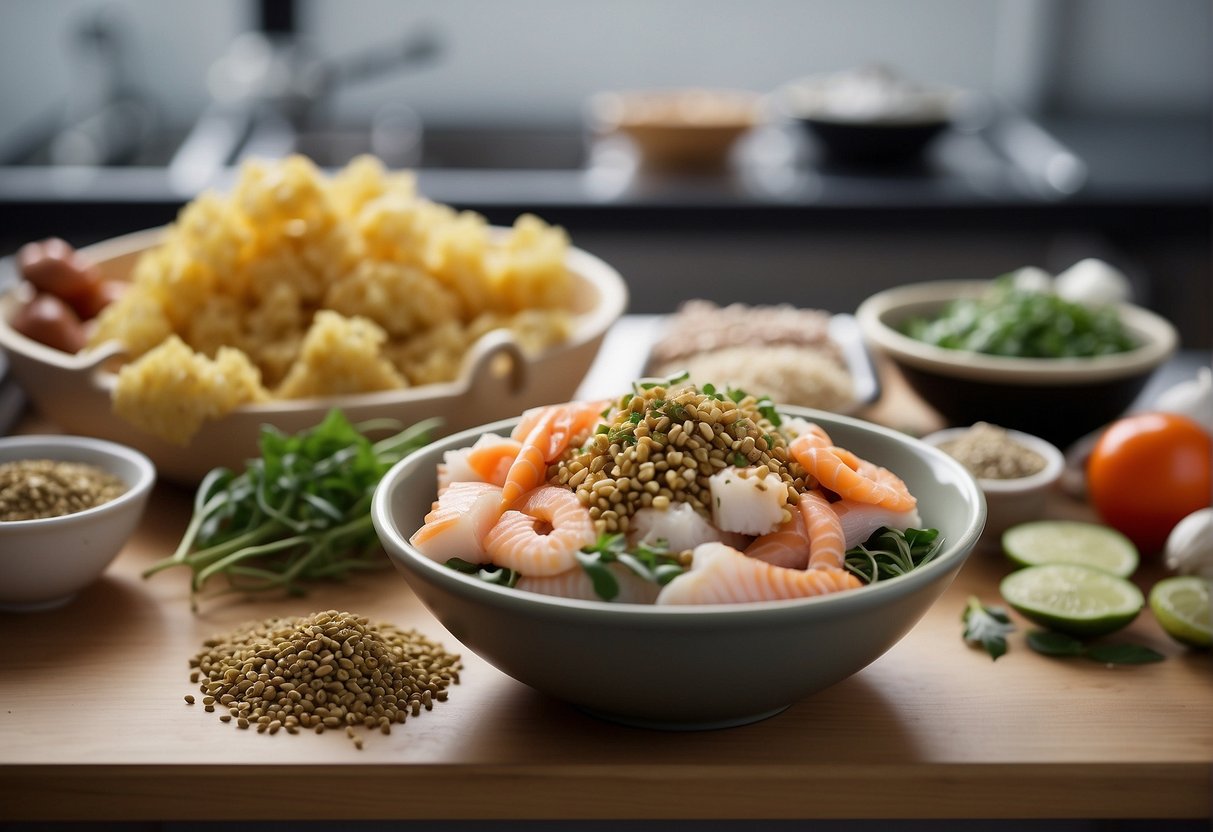
Before you start making your Chinese fish paste, you need to prepare the base. This involves cleaning and filleting the fish and creating the paste. Here's how to do it.
Cleaning and Filleting
First, you need to clean the fish. Rinse it thoroughly with cold water and pat it dry with a paper towel. Then, using a sharp knife, remove the head, tail, and fins. Cut the fish open along the belly and remove the guts. Rinse the fish again with cold water and pat it dry.
Next, fillet the fish. Lay the fish flat on a cutting board and slice along the spine to separate the fillet from the bone. Repeat on the other side. Remove any remaining bones with tweezers.
Creating the Paste
To create the paste, you can use a food processor or a mortar and pestle. Cut the fish fillets into small pieces and add them to the food processor or mortar.
Add a pinch of salt, an egg, and a tablespoon of starch (cornstarch or arrowroot starch). If you're using a food processor, pulse the mixture until it becomes a smooth paste. If you're using a mortar and pestle, grind the mixture until it becomes smooth.
Add a tablespoon of water and continue grinding until the paste is smooth and pliable. You can add more water if necessary, but be careful not to make the paste too thin.
Finally, add a pinch of white pepper and mix well. You can also add seafood to the paste for extra flavor. Grass carp is a common fish used in Chinese fish paste, but you can also use other types of seafood such as shrimp or crab.
That's it! You've now created the base for your Chinese fish paste. In the next section, we'll go over how to use the paste to create different dishes.
Seasoning and Variations
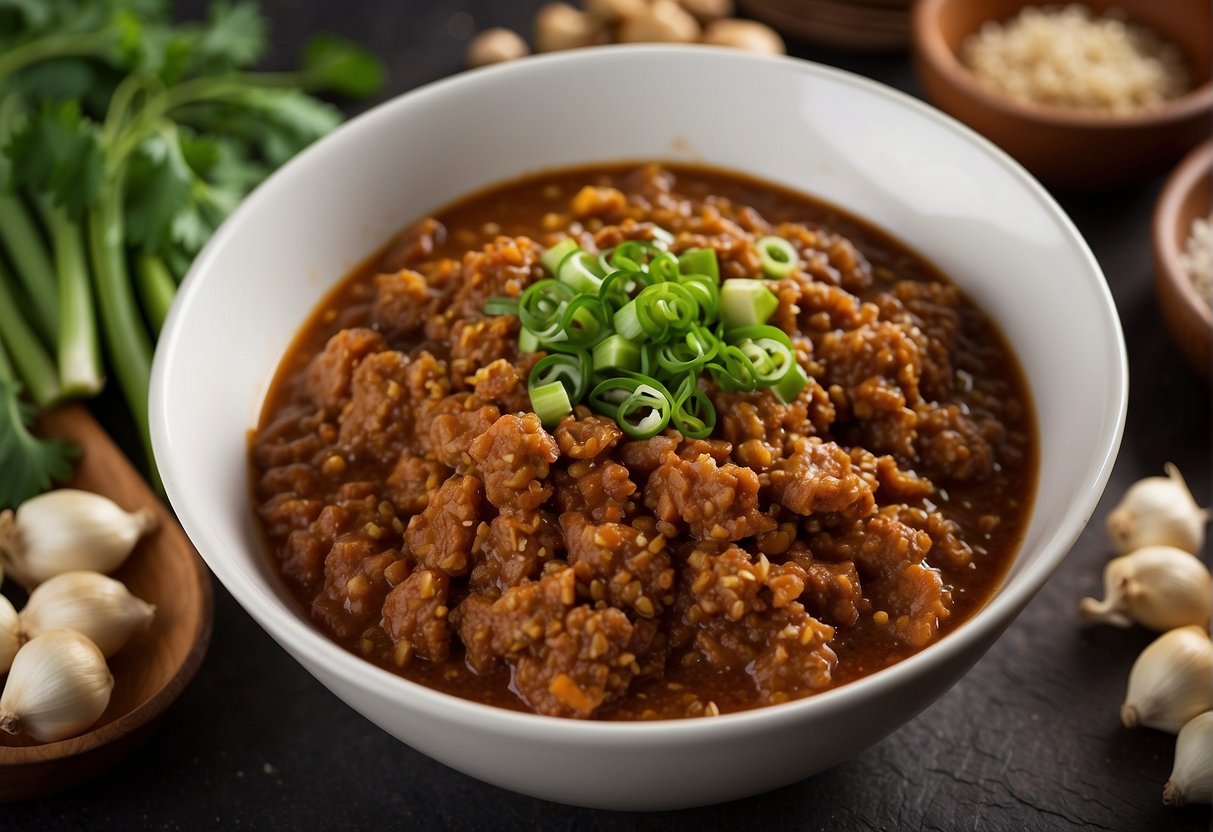
Classic Flavours
When it comes to seasoning Chinese fish paste, a classic flavour profile includes green onions, garlic, sesame oil, and sugar. These ingredients add a depth of flavour to the fish paste while still allowing the fish flavour to shine through. You can add these ingredients to the fish paste mixture before shaping it into balls or patties.
Another classic seasoning for Chinese fish paste is shrimp paste. Shrimp paste can be used in place of fish paste or added to the mixture to create a richer flavour. Be careful not to overdo it with the shrimp paste, as it can be quite pungent.
Innovative Twists
If you're looking to switch things up, there are many innovative twists you can add to your Chinese fish paste. For example, try adding some cold water to the mixture to create a lighter, fluffier texture. You can also experiment with different seasonings, such as chili flakes or Chinese five-spice powder.
Seafood is also a great addition to Chinese fish paste. You can add chopped shrimp or crab meat to the mixture for a seafood twist. Alternatively, you can use the fish paste to stuff squid or other seafood.
Here's a table summarising the classic and innovative seasoning options you can use for your Chinese fish paste:
| Classic Flavours | Innovative Twists |
|---|---|
| Green onions | Cold water |
| Garlic | Chili flakes |
| Sesame oil | Chinese five-spice powder |
| Sugar | Shrimp or crab meat |
| Shrimp paste | Stuffing squid or other seafood |
Cooking Techniques
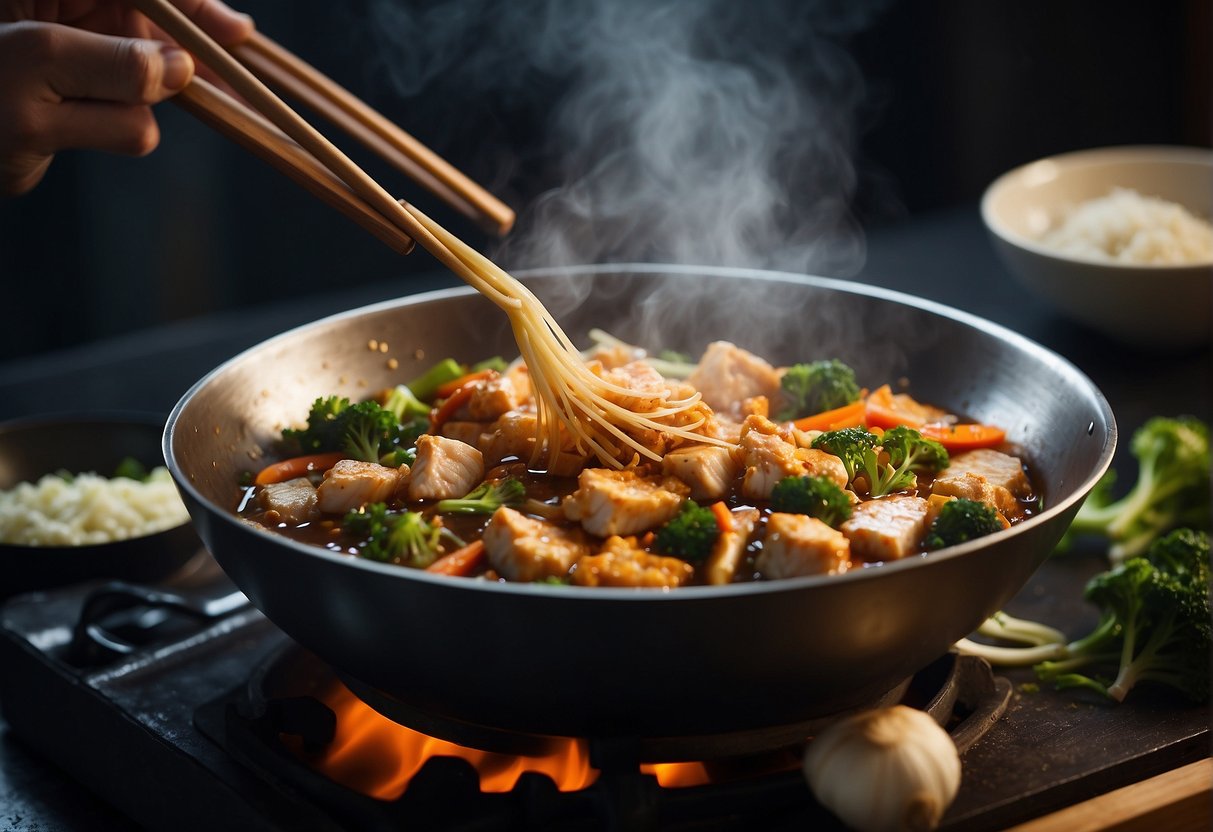
Shaping and Boiling
To shape the fish paste into balls, simply scoop out a spoonful of the paste and roll it into a ball shape using your hands. You can also shape the paste into other shapes such as cylinders or patties to suit your preference.
To boil the fish paste, bring a pot of water to a rolling boil. Gently drop the shaped fish paste into the boiling water and let it cook for about 3-5 minutes or until the paste floats to the surface. Remove the cooked fish paste from the water using a slotted spoon and transfer it to a bowl of cold water to cool down. This will help to give the fish paste a bouncy and sticky texture.
Frying and Serving
To fry the fish paste, heat up a wok or a pan with some oil until it's hot. Gently place the shaped fish paste into the hot oil and let it fry until it's golden brown on the outside. You can also deep-fry the fish paste for a crispier texture.
Once the fish paste is cooked, it can be served in various ways. You can serve it as a snack or appetizer, or as a main dish with rice or noodles. You can also use it as a filling for dumplings or stuffed vegetables such as peppers.
If you want to add some seafood flavours to your fish paste, you can try using shrimp or crab meat. Simply mix the seafood with the fish paste before shaping it into balls or other shapes. This will give your fish paste a delicious and unique taste.
Serving Suggestions
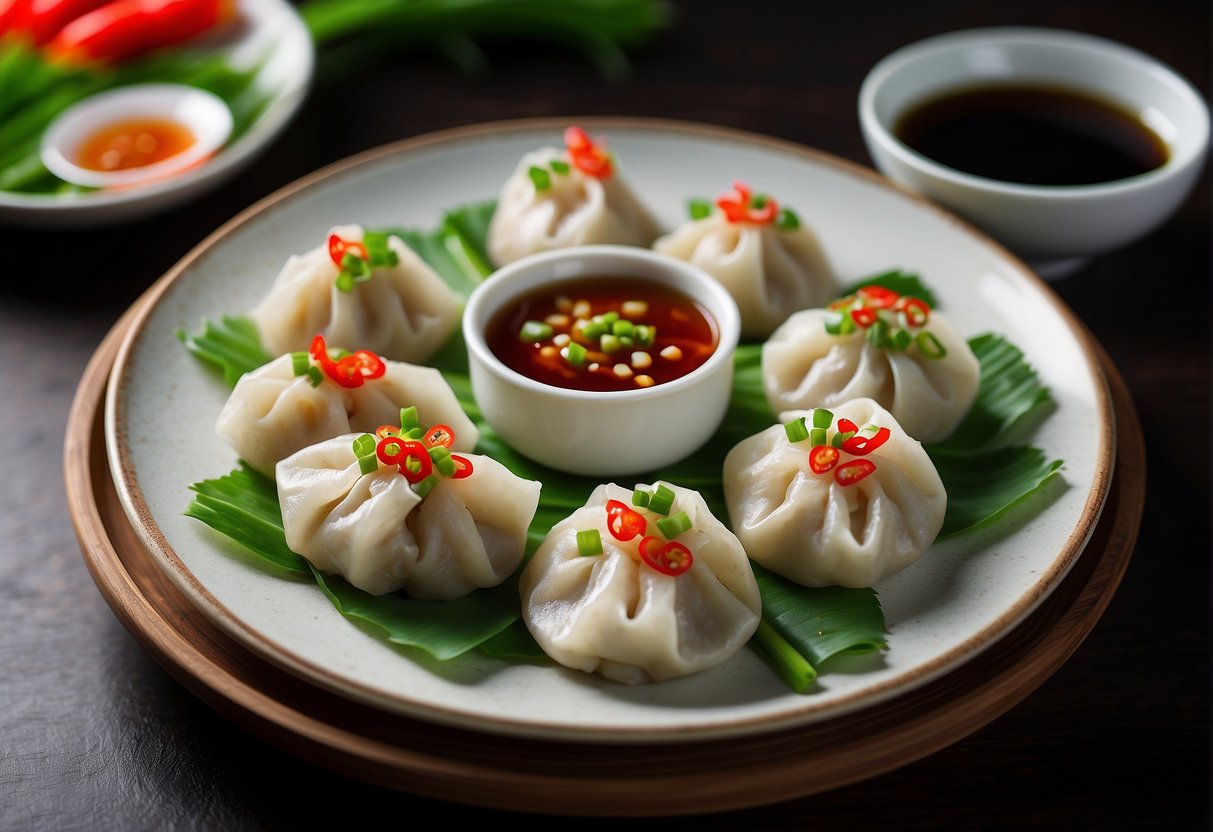
Accompaniments
When serving your Chinese fish paste dish, there are a number of accompaniments that can elevate the dish to new heights. One popular option is to serve the dish with a side of noodles. This can be a great way to add some extra texture to the dish and make it more filling. You can use any type of noodle you like, but we recommend something like udon or soba noodles.
Another great option is to serve the fish paste as part of a hot pot. This is a popular way to enjoy fish paste in China, and it can be a great way to bring people together around the table. Simply prepare a hot pot with your favourite ingredients, and then add the fish paste towards the end of the cooking process.
If you're looking for something a little more substantial, you might want to try serving the fish paste with some stuffed tofu. This is a great way to add some extra protein to the dish, and it can be a great way to use up any leftover tofu you have in the fridge.
Presentation
When it comes to presentation, there are a number of things you can do to make your Chinese fish paste dish look as good as it tastes. One simple option is to garnish the dish with some fresh cilantro. This can add a pop of colour and a burst of flavour to the dish.
Another option is to serve the fish paste in a small dish, and then garnish it with some thinly sliced tofu. This can be a great way to add some extra texture to the dish, and it can make it look more visually appealing.
If you're looking to add some extra seafood to the dish, you might want to try using some shrimp or crab meat. These can be great additions to the dish, and they can add some extra flavour and texture. Just be sure to use fresh seafood, and cook it properly before adding it to the dish.
Finally, if you're looking to really impress your guests, you might want to try serving the fish paste as part of a dim sum spread. This can be a great way to showcase your culinary skills, and it can be a great way to bring people together around the table. Just be sure to use fresh ingredients, and take your time when preparing the dishes.
Frequently Asked Questions

What's the best way to make Chinese fish paste at home?
Making Chinese fish paste at home is relatively easy, and you can use a variety of fish to make it. Some popular fish used in making fish paste include cod, haddock, and mackerel. You can also use seafood such as prawns, squid, and crab to make fish paste.
To make Chinese fish paste, start by filleting the fish and removing the skin and bones. Then, cut the fish into small pieces and grind it in a food processor until it forms a smooth paste. You can add salt, sugar, and other spices to taste.
Can you walk me through the steps for preparing homemade fish balls?
Homemade fish balls are a popular dish in Chinese cuisine. To make fish balls, you will need fish paste, cornstarch, and water. Mix the fish paste with cornstarch and water until it forms a smooth, sticky mixture. Then, roll the mixture into small balls and boil them in hot water until they float to the surface.
What ingredients do I need for an authentic Cantonese fish paste?
An authentic Cantonese fish paste usually consists of fish, salt, sugar, and sometimes cornstarch. You can also add other ingredients such as soy sauce, sesame oil, and ginger for flavour.
How do you ensure your fish paste has the right consistency?
The consistency of fish paste is important in Chinese cooking. To ensure that your fish paste has the right consistency, you can add cornstarch or water to make it thicker or thinner, respectively. You can also adjust the seasoning to taste.
What are the traditional uses for Chinese fish paste in cooking?
Chinese fish paste is a versatile ingredient that is used in many dishes such as fish balls, fish cakes, and stir-fries. It can also be used as a filling for dumplings and spring rolls.
Could you suggest some variations for a Chinese fish cake recipe?
Chinese fish cakes are a popular snack or appetizer in Chinese cuisine. You can add other ingredients such as prawns, squid, or crab meat to the fish paste to make it more flavourful. You can also add vegetables such as carrots, onions, and celery for texture and flavour.
